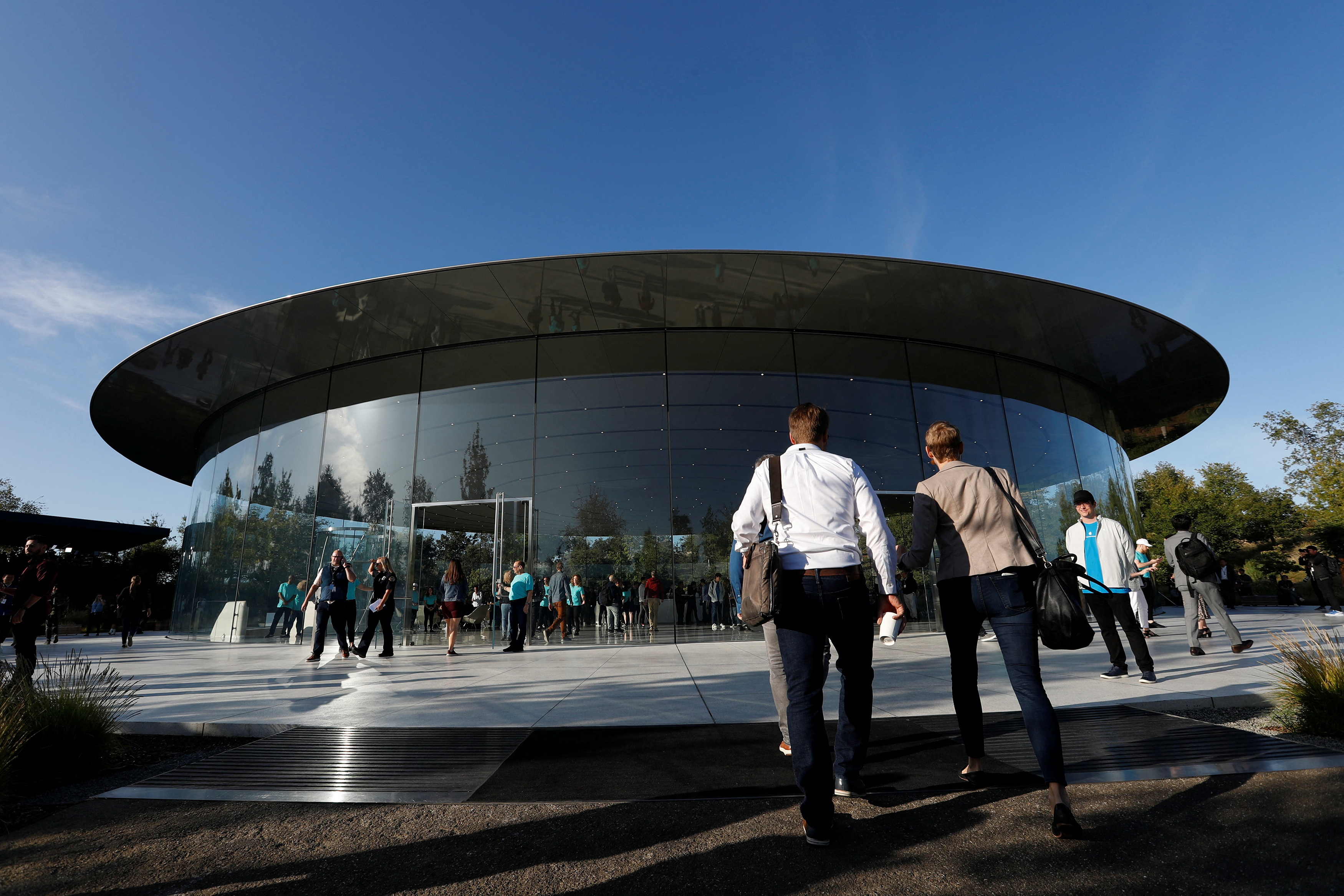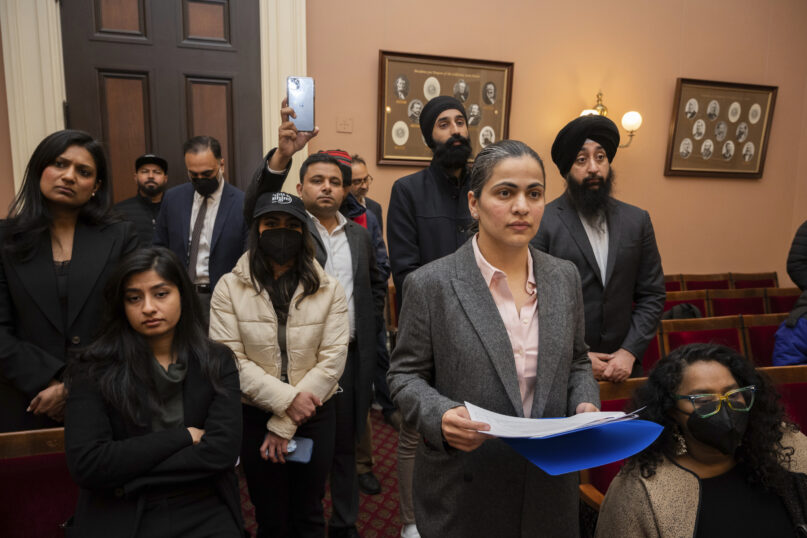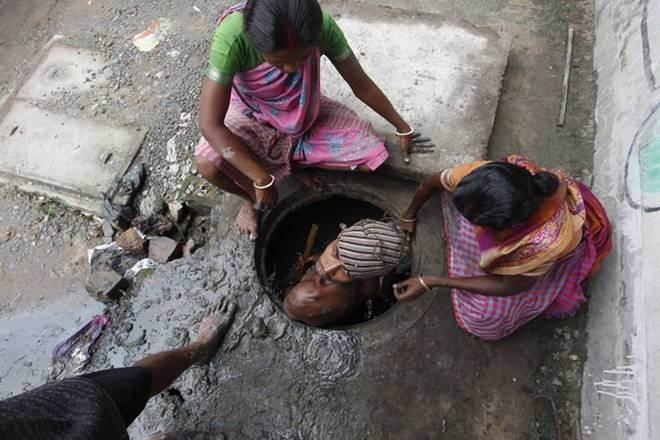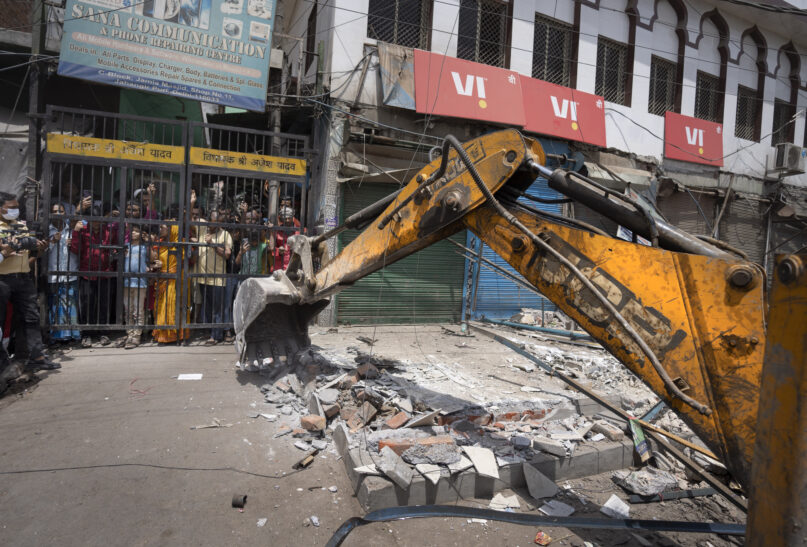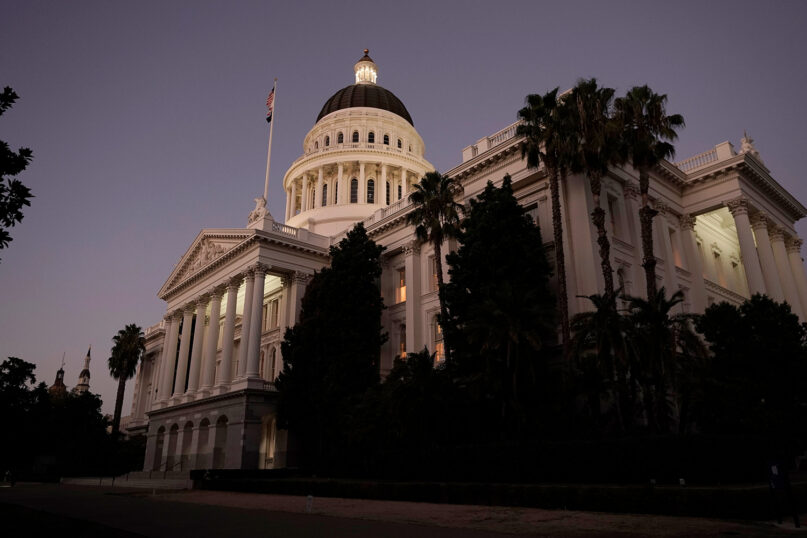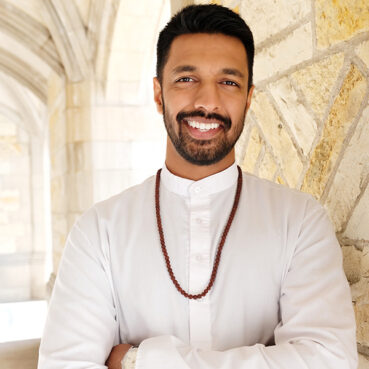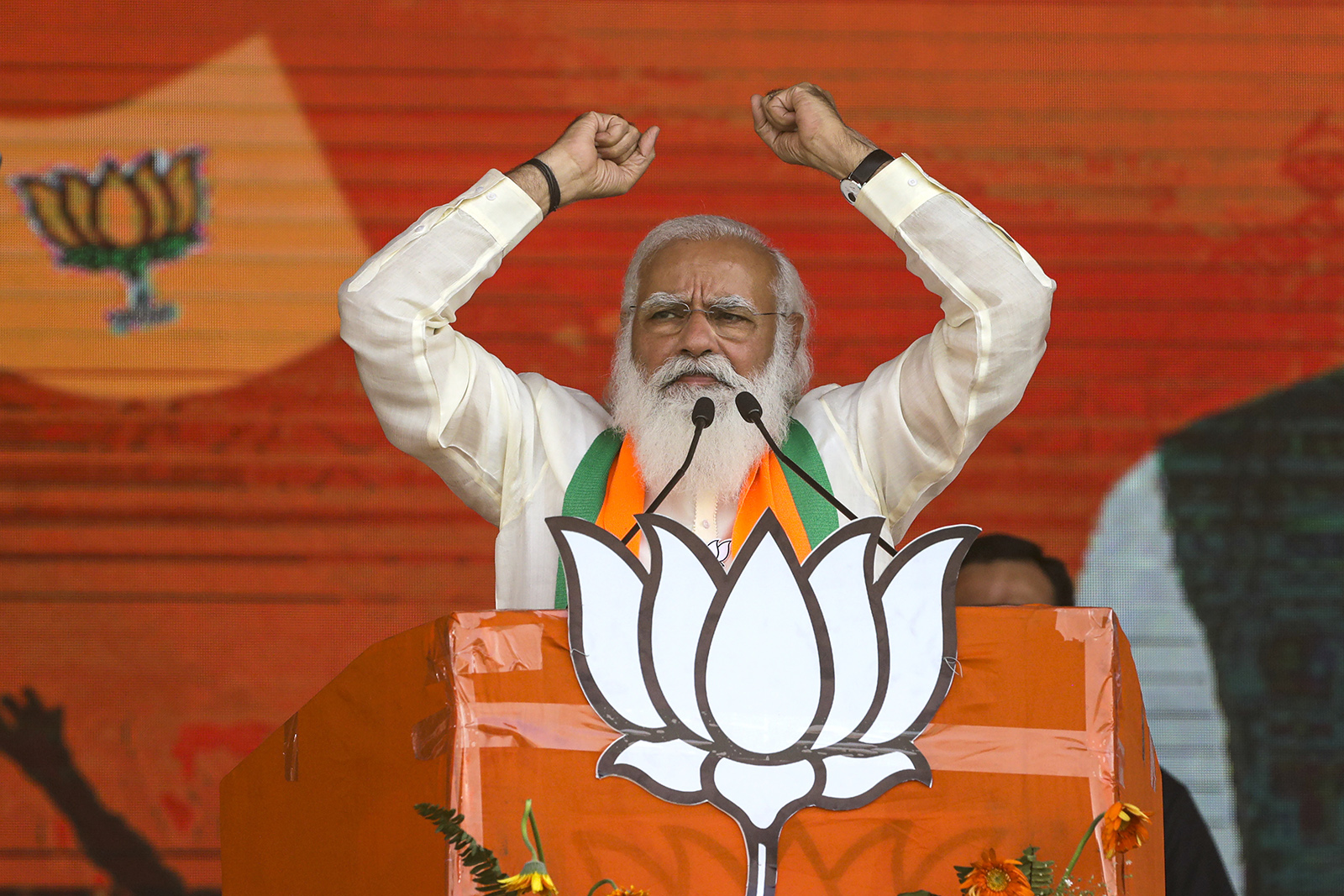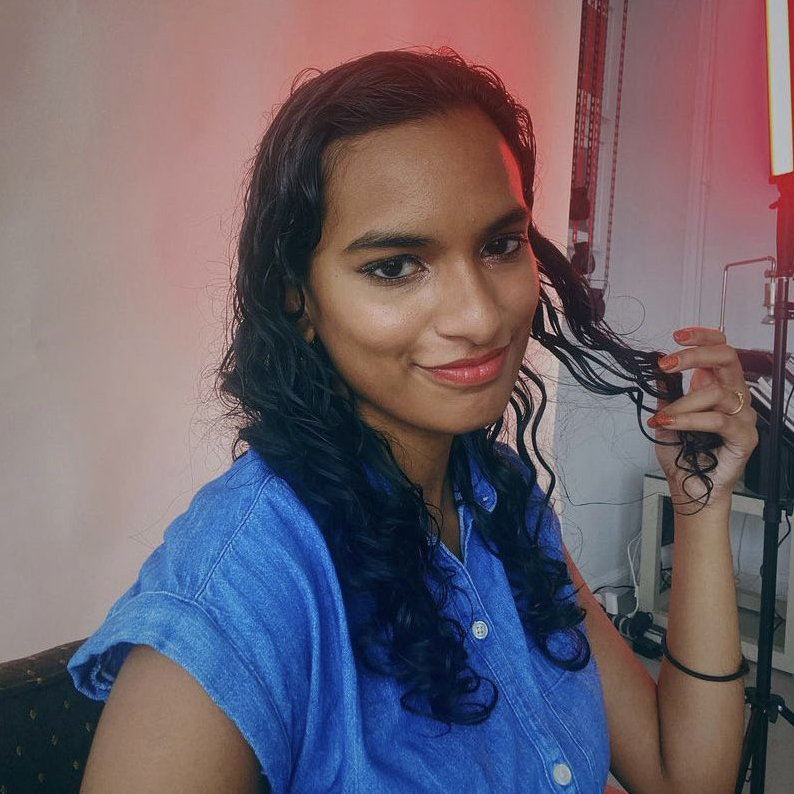Slate Staff
Thu, September 21, 2023

Justin Sullivan/Getty Images
If you’ve seen any media coverage of California’s anti-caste discrimination legislation, you might think the bill was shrouded in controversy. But there’s more to the story, Nitish Pahwa writes—many of the measure’s opponents have ties to established Hindu nationalist political organizations in India. Pahwa explains how this backlash is one manifestation of the growing influence of Hindu nationalist politics in the U.S.
Plus, ICYMI: Molly Olmstead unpacks Vivek Ramaswamy’s puzzling embrace of both Hindu and Christian nationalism.
Nitish Pahwa
Thu, September 21, 2023

Photo illustration by Slate. Photos by Seattle City Council, Nikhil Patil/Getty Images Plus, Wallentine/Getty Images Plus, and California State Senate.
Earlier this month, the California Assembly passed S.B. 403, the first state bill in the country to include caste under the scope of anti-discrimination law. The bill has been sent to Gov. Gavin Newsom, who has until Oct. 14 to officially sign it. Newsom has not said whether he supports the legislation—but if he does give it his signature, it won’t be thanks to how American media has covered the measure and the supposed controversy around it. Along the bill’s path to this monumental point, local and national outlets have chosen to amplify bad-faith actors and parrot reactionary institutions and talking points.
Coverage of the bill created the perception that it was met with significant backlash in California, the state with the largest South Asian American population, over fears that the bill would engender anti-Hindu discrimination. But that’s less a grassroots phenomenon and more a manifestation of the growing influence of Hindu nationalism in American politics—driven in part by activists and groups with direct links to the Sangh Parivar, the India-based Hindu nationalist network that paved the ideological route to Prime Minister Narendra Modi’s rule.
Hindu nationalism, also known as Hindutva or “Hinduness,” arises from a core belief that the Indian subcontinent belongs to Hindus and Hindus only—the hundreds of millions of Muslims, Jains, Christians, Buddhists, and members of other religious groups with millennia-spanning roots in the region need not apply. This ideology has manifested itself most flagrantly in the reign of Modi and his Bharatiya Janata Party, which has censored Indian textbooks and records to erase the subcontinent’s vibrant history of non-Hindu civilizations, granted carte blanche to fundamentalists who’ve visited violent attacks upon Muslims and Dalits, enacted policies that strip civil rights from Muslims, and scrubbed the Indian internet of anti-Modi dissenters.
U.S.-based Hindu nationalists seek to dismiss any criticisms of Modi, his party, and their fundamentalist visions of Hinduism as constituting a form of “Hinduphobia.” And they’re opposed to anti-castetist policy like the one pending in California, as many of the most conservative Hindus benefit from the system. (More on that in a moment.)
Casteism is also promoted stateside through the international branches of the very extremist organizations that helped the Bharatiya Janata Party come to power. Just a few examples among many: the Hindu American Foundation, a 20-year-old nonprofit that emerged from the Islamophobic Vishwa Hindu Parishad group that is a Sangh Parivar member; the World Hindu Council of America, which is designated as an overseas branch of the VHP; and the Coalition of Hindus of North America, whose leaders are affiliated with the VHP and the United States Hindu Alliance—the latter of which was formed by former volunteers with the Sangh Parivar’s century-old Rashtriya Swayamsevak Sangh group.
One might think that journalists who interact with such Hindutva-network organizations in the course of their reporting would make note of those unseemly, barely hidden ties. Yet U.S. media outlets tend to be troublingly blasé about this context, often characterizing these groups as concerned activists or good-faith opposition. Coverage of the California anti-caste-discrimination legislation in Politico, ABC News, the New York Times, the Associated Press, the Sacramento Bee, and Cal Matters has included input from representatives of the aforementioned groups without any indication of their association with India’s international Hindutva cells; at most, they’re identified as opponents of organizers against the legislation.
To better understand what’s going on here, it’s worth taking a step back to look at how caste is recognized in the modern era—and why it’s become a flashpoint beyond the Indian subcontinent.
Caste is a hierarchical system of group stratification with roots tracing back to Hinduism as practiced in ancient India. In the Vedic Hindu period of Indian society, caste consisted of four distinct social classes: Brahmins, the top rank that encompassed highly respected religious and spiritual leaders; Kshatriyas, the bureaucrats and warriors who stood second only to the Brahmins; Vaishyas, who were artists, merchants, and farmers; and Shudras, the bottom-level workers. The post-Vedic era would also characterize many Shudras as Dalits, or “untouchables,” who do not hold claim to any caste and are all but unrecognized in casteist society. One could recognize a person’s class status from their family name, ancestry, and religious devotion. While the caste system existed throughout Hindu and Indian civilization, spanning all its empires, it was not always recognized under the word caste—a term that originated from Portuguese, thanks to settlers who came to India in 1498—and it took on varied and ever-changing forms, all quite different from the modern incarnation most Indians are familiar with.
It took the British Empire’s rule-by-division to formalize casteism in Indian common law, as the colonists divided their Indian subjects by arbitrary castes in each 10-year census, granted jobs only to members of higher castes, and imposed legal penalties upon lower-caste populations. As Indians agitated for freedom from the Brits in the early 20th century, a dynamic anti-casteism movement led by Dalit scholar B.R. Ambedkar ensured that India’s post-independence constitution forbid caste-based discrimination while enshrining affirmative action programs for disenfranchised lower-caste Indians. Of course, this wasn’t enough on its own, and higher-caste Indian communities have long spurned or even violently attacked Dalits along with other lower-caste populations—a grisly trend that has only escalated under current Prime Minister Narendra Modi (who comes from a lower-caste background himself, a fact he invokes in speeches to deny that casteism still exists).
Not only are Hindu nationalists loath to part with the privileges afforded to them by the casteist system—wealth, societal status, and political advantages—but they genuinely view many Dalits and lower-caste individuals as an “unclean” people unworthy of basic human rights. In India, the most bigoted Brahmins will fence themselves off from Dalits in any way possible, forcing them into poverty-wage jobs with horrific conditions, and not even allow them the basic dignity of sharing common spaces or utensils with higher-caste Indians.
Of course, it’s difficult to boil down the complex, millennia-spanning history of caste, and it’s only recently that the United States has come face-to-face with the concept. During the summer of anti–police brutality protests spurred by George Floyd’s murder, Americans newly introduced to sociopolitical concepts like systemic racism and mutual aid likewise got their first glimpses of casteism. In June 2020, the United States registered its first-ever caste-discrimination lawsuit when the state of California sued Cisco Systems under the 1964 Civil Rights Act after some of its employees were alleged to have denied workplace opportunities to lower-caste Indian American employees based solely on their caste. (The suit is ongoing.)
The anti-Dalit taunts included in the lawsuit underscored how some Brahmins—who, because they have the means to emigrate and travel, make up the bulk of Indian American immigrants—might prefer that this segregation be universal. They’d also prefer to promote the image that their lives in the United States are the result of bootstraps effort, rather than what essentially amounts to birthright privilege, as a CUNY anthropology professor recently wrote in the Indian Express.
In August of that year, Pulitzer-winning journalist Isabel Wilkerson published the acclaimed book Caste: The Origin of Our Discontents, which compared the U.S.’s history of racism to India’s more vicious forms of casteism; despite some criticism from lower-caste scholars, the book was a bestseller and has inspired an upcoming Ava DuVernay film. In the years since, caste has only entered the public consciousness more in America: There have been allegations of casteist workplace environments fostered by Silicon Valley’s South Asian workers and executives, emerging scholarship on casteism’s worldwide presence, anti-caste-discrimination policies adopted at colleges like the University of Michigan and Rutgers, a successful Seattle City Council ordinance to ban casteist discrimination, and even an appearance in the 2024 GOP primary, with the Ron DeSantis campaign singling out Vivek Ramaswamy’s high-caste background as a potential attack line.
Yet the extremists promoting anti-anti-casteism are presented by U.S. media as concerned citizens instead of foot soldiers for a grander and more insidious movement. What’s more, their statements to the press convey Hindu fundamentalists’ common propagandistic talking points time and time again with no pushback or fact-checking, and their well-known, ruthlessly organized methods of flooding social media and politicians’ offices with rampant disinformation are framed as grassroots protests.
As such, spokespeople for the larger Sangh Parivar footprint that includes the Hindu American Foundation and the Coalition of Hindus of North America are granted free rein to push dubious talking points, including: 1) that modern casteism’s colonial origins mean that it has nothing to do with Hinduism as practiced past or present, which is a blatant falsehood; 2) that legislating against casteism unfairly singles out Hindus and is thus discriminatory against Hindus as a whole, even though the stateside battles around casteism involve high-caste Hindu Americans already discriminating against lower-caste Hindu Americans, and even though casteism is also practiced by some devotees of other religions like Islam and Sikhism; 3) that caste discrimination just doesn’t happen in the U.S.—which, as we saw from the Cisco lawsuit, is an easy-to-dismiss lie.
Of course, the coalitions opposing anti-caste-discrimination laws have constitutional free speech rights like anyone else, and mainstream journalists have a responsibility to look at issues from multiple angles. But in soliciting Hindu nationalist opinion and excluding even basic aspects of the movement’s broader context, as outlined above, writers do a disservice to readers likely to be unaware of domestic casteism and Hindu nationalism’s widespread influence.
Even if intrepid readers take it upon themselves to look up groups like VHP, they may be more likely to come upon such organizations’ self-professed advertising, which will cover for their more nefarious missions through buzzwords like “service” and “human rights.” One particularly egregious example: A July story in the local outlet the Los Altos Town Crier noted that S.B. 403 “draws opposition,” featuring quotes from one such opponent, Richa Gautam, who’s identified as a “founder and executive director” for “an alliance of human rights organizations” as well as a separate “organization that challenges caste” (a rather ambiguous phrase). The story neglects to note that Gautam has aligned herself with the World Hindu Council of America, that she’s often spouted Islamophobic rhetoric, and that her own “human rights” record is rather dubious, considering she was fired in 2018 from the blockchain company Tech Mahindra after she was found to have harassed a gay employee over his sexuality. (Many Hindu nationalists tend to be homophobic.)
This sort of thing has been commonplace in U.S. media for a while now. You can look to last year’s Wall Street Journal op-ed from the Hindu American Foundation’s executive director, who referred to Brown University’s anti-caste-oppression policy as “discriminatory.” Or to the Religion News Service articles produced with funding from the Guru Krupa Foundation, a charity with ties to the Sangh Parivar outfit Ekal Vidyalaya. Or other outlets that unabashedly spread concern over a supposed epidemic of anti-Hindu hate crimes in the U.S., even though such incidents remain rare, and are far outnumbered by acts of Islamophobia and anti-Sikhism.
There are a few instances of real anti-Hindu discrimination in the U.S., like bans on yoga and Sanskrit chants in public schools, bigoted remarks from conservatives like Ann Coulter, and the occasional vandalism that hits a Hindu temple. But Hindu nationalist orgs are not primarily devoted to combating such acts. Rather, they seek to characterize any critiques of Hindu nationalism and/or the Modi regime as being “Hinduphobic,” in essence equating them with actual anti-Hindu incidents.
This applies to the hullaballoo around California’s anti-caste-discrimination law that has followed it at every step of the process, from its consideration in the California state Senate to an Assembly-level compromise that involved removing a detailed history of casteism’s South Asian origins from S.B. 403, and from the barrages of online attacks directed against the bill’s supporters to the Sangh Parivar affiliates now calling on Newsom to veto the legislation. (This also takes attention away from the Dalit activists who are going on hunger strikes until the bill is signed, a way of demonstrating how existential this is for lower-caste Indian Americans.)
The California bill is a civil rights triumph that passed with overwhelming support in both the state Senate and Assembly, carries plenty of public favor with both social justice groups and everyday constituents, and addresses a real, indisputable issue afflicting the South Asian diaspora today, especially in the Golden State. But you wouldn’t know that from the repeated media emphasis on vague notions of “divisiveness” and “conflict.”

